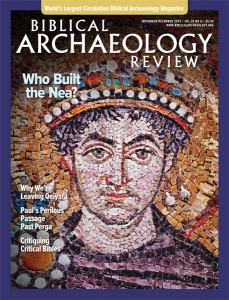
The 92nd Street Y in New York City called me a few months ago, asking me to speak. We discussed possible topics, and I finally chose “What’s a Greek God Doing in an Ancient Synagogue?” They also agreed to my asking two real experts to join me on the platform: Jodi Magness of the University of North Carolina at Chapel Hill and Steve Fine of Yeshiva University. We had a good time—and so did the enthusiastic audience—but we didn’t solve the problem, at least to my mind.
I, of course, had been thinking of the mosaic pavement of the Hammath Tiberias synagogue on the Sea of Galilee. It wasn’t only that there was Helios, the Greek sun god, riding his four-horse chariot (quadriga) right there in the middle of the zodiac, but it was featured in the center of the floor right behind a mosaic of the Torah ark that was flanked by two large menorahs. Below the Helios mosaic was an inscription thanking the good Jews who founded or contributed money to the synagogue.

But that was just the beginning. Mosaics with Helios in his quadriga were featured in half a dozen synagogues in Late Antiquity (fourth–seventh centuries C.E.) sprinkled around upper Judea. And if you try to limit things geographically, I’ll call your attention to a text-only zodiac in the mosaic floor of the ancient synagogue at Ein Gedi on the shore of the Dead Sea.
Already a library member? Log in here.
Institution user? Log in with your IP address.

